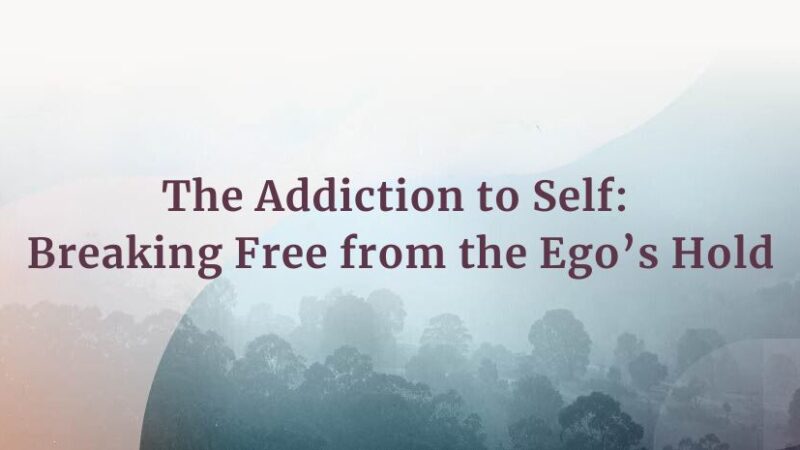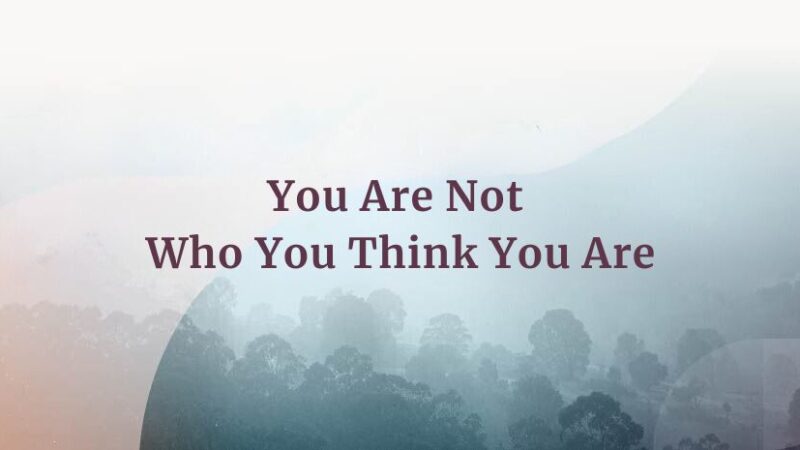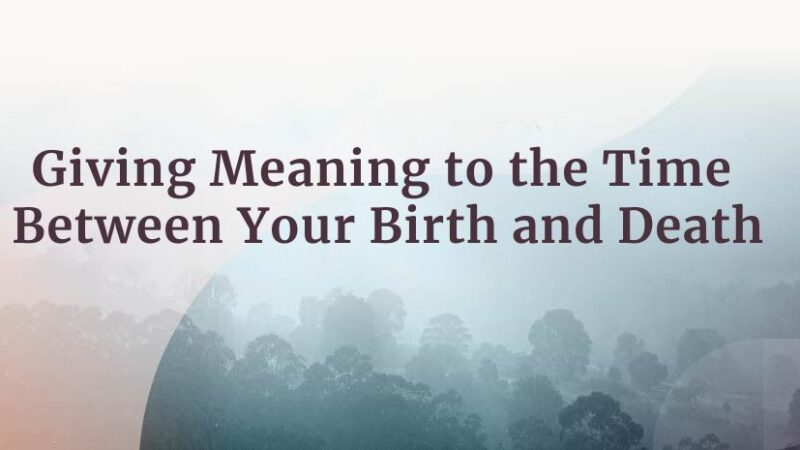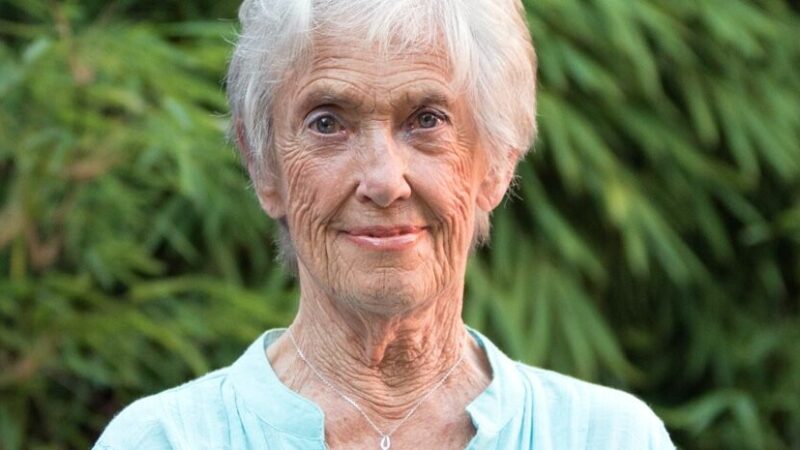-
E117: The Real Work: Letting Go from Within
Michael Singer — October 2, 2025
True spirituality isn’t about mystical experiences or lofty ideals—it’s about honestly facing...
-
Once More: Reflections on Reincarnation and the Gap Between Lives
Tami Simon — September 26, 2025
In this special reflection episode of Insights at the Edge host Tami Simon looks back on her...
-
Honey Tasting Meditation: Build Your Relationship with Sweetness
There is a saying that goes “hurt people hurt people.” I believe this to be true. We have been...
Written by:
Amy Burtaine, Michelle Cassandra Johnson
-
Many Voices, One Journey
The Sounds True Blog
Insights, reflections, and practices from Sounds True teachers, authors, staff, and more. Have a look—to find some inspiration and wisdom for uplifting your day.
Standing Together, and Stepping Up
Written By:
Tami Simon -
The Michael Singer Podcast
Your Highest Intention: Self-Realization
Michael Singer discusses intention—"perhaps the deepest thing we can talk about"—and the path to self-realization.
This Week:
E116: Doing the Best You Can: The Path to Liberation -
Many Voices, One Journey
The Sounds True Blog
Insights, reflections, and practices from Sounds True teachers, authors, staff, and more. Have a look—to find some inspiration and wisdom for uplifting your day.
Take Your Inner Child on Playdates
Written By:
Megan Sherer
600 Podcasts and Counting...
Subscribe to Insights at the Edge to hear all of Tami's interviews (transcripts available, too!), featuring Eckhart Tolle, Caroline Myss, Tara Brach, Jack Kornfield, Adyashanti, and many more.
Most Recent
E86: The Addiction to Self: Breaking Free from the Ego...
Spiritual growth begins not by seeking higher states, but by fully recognizing how we built the ego out of thoughts from our past and are now identified with it. Our resultant preferences and suppressed past experiences make us suffer and constrict our awareness to ourselves. True liberation comes not by spiritualizing the ego, but by relaxing behind it and allowing reality to pass through while remaining centered in our true nature as consciousness.
For more information, go to michaelsingerpodcast.com.
© Sounds True Inc. Episodes: © 2025 Michael A. Singer. All Rights Reserved.
E85: You Are Not Who You Think You Are
You are not your thoughts, emotions, or experiences—you are the conscious awareness behind them. Identifying with these inner phenomena creates a disturbed inner world that you mistakenly try to fix with the outside world. Spiritual growth involves changing your relationship with your mind and emotions by releasing their past stored blockages and rediscovering the stillness, clarity, and joy of your true nature.
For more information, go to michaelsingerpodcast.com.
© Sounds True Inc. Episodes: © 2025 Michael A. Singer. All Rights Reserved.
Michelle Cassandra Johnson and Amy Burtaine: The Wisdo...
More and more people are waking up to the very real dangers that humanity is facing as a result of a declining honeybee population. Yet as we join the refrain, “Save the bees!” Michelle Cassandra Johnson and Amy Burtaine pose a profound and extraordinary question: What if it’s the bees who are trying to save us?
In this eye-opening conversation with the coauthors of the new book The Wisdom of the Hive, Tami Simon speaks with Michelle and Amy about bees as psychopomps who come to us with guidance; the spiritual lineage of bee priestesses; sustainability and respect in bee tending; hive consciousness and the concept of the superorganism; bees as an indicator species and the consequences of colony collapse for humanity; tending bees in a way that aligns with how they want to live; experiencing the power of the hum; the healing properties of the hive; how opening a jar of honey can turn into a shamanic journey; the waggle dance; the adaptability of bees and the various roles they play over their lifespan; the queen and her brilliance; becoming less fearful of bees (and what to do when one lands on you!); bees as a model of faith and trust; the question bees have for each one of us: What is the medicine I can offer?; how bees demonstrate gratitude, contentment, and equanimity; the swarm; meaning, connection, creativity, and contribution; the polarity of the dark and the light; the gift of “a box of sweetness”; why “the more you give away, the more you have.”
Note: This episode originally aired on Sounds True One, where these special episodes of Insights at the Edge are available to watch live on video and with exclusive access to Q&As with our guests. Learn more at join.soundstrue.com.
Customer Favorites
S1 E3: Giving Meaning to the Time Between Your Birth a...
The time that we have between our births and our deaths is a great gift. What we do with this time and how we give our lives meaning is the subject of this podcast with Michael Singer. Here, Singer discusses hard yet empowering truths about the fleeting nature of our lives, the inherent flaw in our most common strategies for feeling “okay inside,” why spirituality is never about getting what you want or avoiding what you don’t want, and much more.
For more information, go to michaelsingerpodcast.com.
© Sounds True Inc. Episodes: © 2024 Michael A. Singer. All Rights Reserved.
Joanna Macy: We Belong: Hope, Choice, and Our Relation...
Dr. Joanna Macy is an ecophilosopher, activist, and Buddhist scholar who has been at the forefront of movements for social justice and environmentalism for more than five decades. She founded the Work That Reconnects Network and has written many books, including World as Lover, World as Self. In this episode of Insights at the Edge, Tami Simon speaks with Joanna about hope in times of chaos and dissolution, as well as how hope is something we do rather than just feel. Joanna and Tami discuss apathy as a refusal to face the inevitability of suffering and why the state of the environment can be especially heartbreaking. Finally, Tami and Joanna talk about our relationship with the earth as a natural birthright—one that is actually the source of all our energy and joy.
Gabby Bernstein: The Self-Led Journey Through Addictio...
Is it really possible to heal our deepest wounds and live a life without fear and anxiety? According to Gabby Bernstein, the answer is an emphatic yes. In this podcast, Tami Simon speaks with Gabby about what it means to be led by the Self—that mysterious center of our being that can witness everything we experience in life from a compassionate center connected with source energy.
Settle in for an inspiring conversation exploring: why our “clean vulnerability” can be our greatest strength; Internal Family Systems therapy and how it helps us heal from the inside out; activating calmness, connection, curiosity, commitment, and other “C qualities”; invoking our loving and wise inner parent; the four S’s: to be seen, soothed, safe, and secure; the connection between healing our trauma and healing our attachment style; embracing our shameful experiences with compassion; psychosomatic illness and “hiding behind the body”; the power of co-regulation; developing a relationship with your spiritual guidance system and reaching a place of faith in the future; and more.
This episode first aired live and on video on Sounds True One. To watch Insights at the Edge episodes live and on video, and to access additional bonus Q&A, please visit join.soundstrue.com to learn more.






